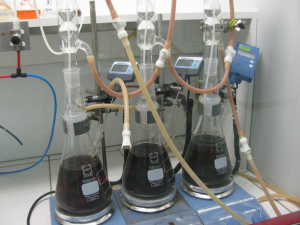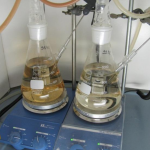 Exposure testing is typically performed for purposes of material selection, quality control, CLP-directive, …. In an exposure test a coupon (test plate) of the material to be examined (metal, coated metal, plastic) is exposed to standardized or non-standardized conditions. The exposure time varies between several weeks to months. Depending on the situation it can be chosen to mimic the real environmental conditions as closely as possible, to apply worst case conditions, or to apply standardized conditions to qualify the use of the material for the application. Some of the parameters that need to be considered are:
Exposure testing is typically performed for purposes of material selection, quality control, CLP-directive, …. In an exposure test a coupon (test plate) of the material to be examined (metal, coated metal, plastic) is exposed to standardized or non-standardized conditions. The exposure time varies between several weeks to months. Depending on the situation it can be chosen to mimic the real environmental conditions as closely as possible, to apply worst case conditions, or to apply standardized conditions to qualify the use of the material for the application. Some of the parameters that need to be considered are:
- Material (surface condition, presence of a weld, …)
- Medium
- Phase (liquid, interphase, gas)
- Aeration
- Temperature/pressure
- Agitation
We have a well-equipped laboratory in which all classical exposure tests can be performed as well as simulations and pilot-scale tests specifically tailored to the customer’s needs. The following are just a few of the tests and corresponding standards that can be performed in the laboratory. This list is not exhaustive.
- Exposure tests to determine degradation phenomena and (localized) corrosion rate in liquid phase/intherphase/ gas phase – ASTM G31
- Testing of crevice corrosion – ASTM G78
- Testing of stress-corrosion cracking (among others ‘drop evaporation test (DET)’)
- Testing of galvanic (contact) corrosion
- Testing of atmospheric corrosion (by salt spray tests, cyclic corrosion tests, condensation tests, climate tests) – ISO 9227, ASTM B117, Kesternich test, …
- Tests to evaluate corrosion under insulation (CUI) – ASTM G189, ASTM C795, ASTM C1617
- Tests according to ADR legislation (CLP-directive)
- Quality control tests like Huey, Streicher and Strauss tests – ASTM A262
- Tests to evaluate corrosion inhibitors
In case the test or standard you are searching for is not in this list, please contact us so we can inform you about the possibility to perform this test.






